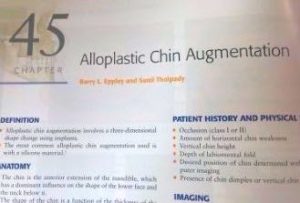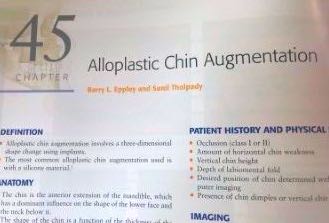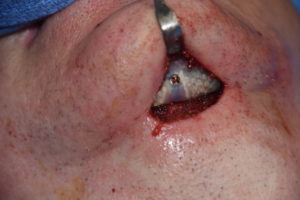
Silicone chin implants are the most commonly used as they fall into the implant philosophical approach of ‘easy in, easy out…and easy back in’. While every patient hopes to have an implant surgery that is a ‘one and done’, the reality is that up to one-third of any aesthetic implant placed in the body will undergo an eventual revision or removal. Chin implants are no exception.

Dr. Barry Eppley
Indianapolis, Indiana





